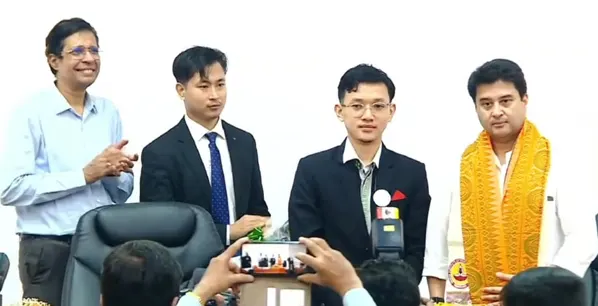Staff Reporter
ITANAGAR, 27 Sep: Members of the Students’ Association for the Development of India’s North East Region (SADINER), of IIT Madras (Tamil Nadu), on Friday had a brief interaction with DoNER Minister Jyotiraditya M Scindia, who visited the campus to examine the indigenous 5g technology.
During the interaction at the TT Jagannathan auditorium of the campus, SADINER president Tarh Haniya submitted a memorandum to Scindia.
Speaking to this daily, Haniya said that the association is looking for financial aid from the governments of the Northeast states “to conserve the tribal languages through technology,” which he said was highlighted before Scindia.
“SADINER believes in the power of education and technology to boost the ever-dynamic growth of the northeastern states,” he said, adding that the association is “committed to work for the development of education and technology of the people from the Northeast region.”
“It is as simple as giving back to our society,” he said.
Haniya informed also that the SADINER is celebrating its 10th anniversary this year.
The SADINER aims to provide a platform for the students of IIT Madras to “creatively engage with issues of progress and development concerning Northeast India, and to appreciate the cultural diversity of the region,” Haniya said.
“We aim to facilitate meaningful discussions, organise cultural events, and promote initiatives that celebrate the region’s rich diversity,” he added.
Haniya further informed that the SADINER will organise a “Northeast Development Summit” next year “to foster transformative dialogues and actionable solutions for the educational development of the Northeast region of India.”
The SADINER’s has also launched a ‘Go Northeast’initiative, which aims to showcase the natural beauty and cultural heritage of the Northeast through a fully-funded trip for selected IIT Madras students.
“This initiative will promote the Northeast as a vibrant travel destination with an objective to showcase tourism potential; highlight Arunachal Pradesh’ natural and cultural attractions; engage students; foster experiential learning and adventure tourism; promote cultural understanding; and facilitate interactions between students and local communities,” the association informed in a release.



